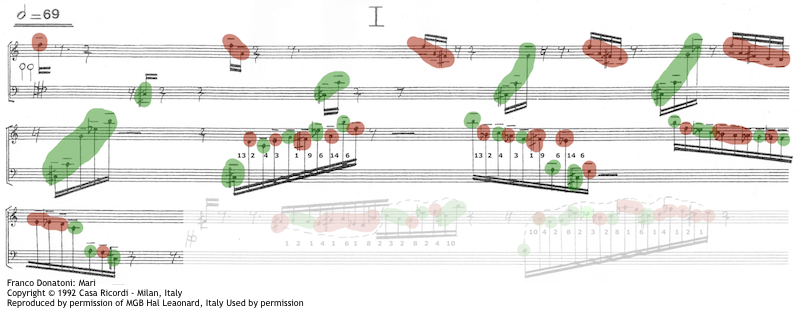Improving the practice and performance of contemporary music
Opening section: ppp
The opening section contains the basic musical material. Two cells emerge from two separated single notes (F5 and C#3). They gradually build up and succeed each other at an ever-decreasing distance until there’s only one sixteenth note rest left between them. Both cells together form a figure in counterpoint. The next cell follows after a long pause and consists of a combination of the two previous counterpoint cells. The material of both cells is alternately used in an ascending way. From this emerges a series of intervals that is conserved through the next cell. The direction is now mostly descending. The following cell is a perfect combination of the two previous ones. They are combined into one long descending line in which every absolute pitch used in the previous cells occurs only once.
The codes applied in the opening section generate panels and filters that create a dialogue with each other on a micro level through the composition. The absolute pitches from the opening section are conserved throughout the construction of the first synthesis-cell in the second system. The two opening cells are thus panels that recur. The filter applied on those cells – the merging of the two cells – generates a new musical element: the series of intervals. This series of intervals forms a panel that recurs literally in the next cell. The notes are nevertheless filtered following this series of intervals (in which some new notes appear). The previously used pitches occur again in the next cell as a panel. The counterpoint idea is strongly present in the opening section using the dynamic ppp.
